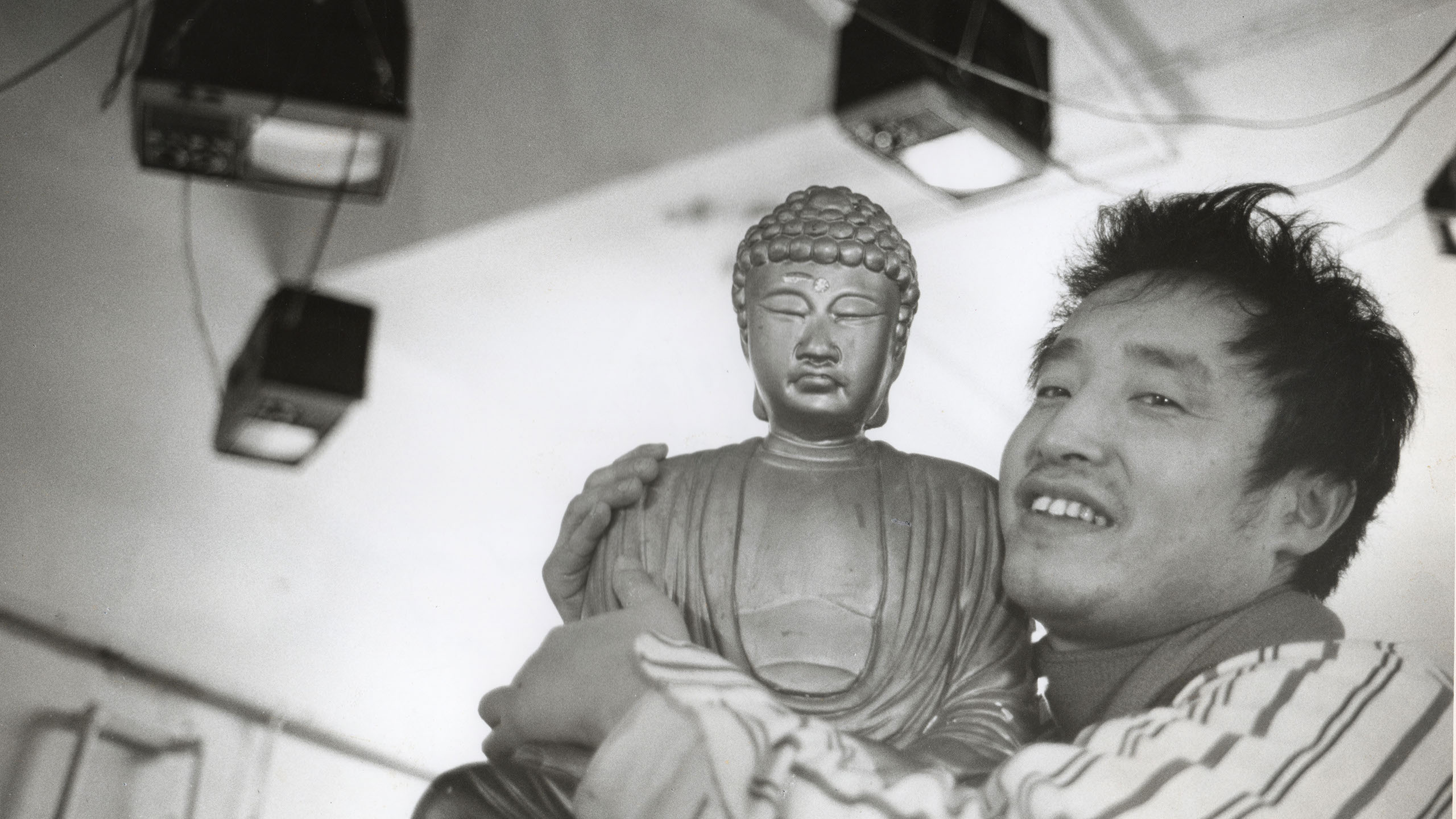“I use technology in order to hate it properly,” pioneering video artist and self-identified cultural terrorist Nam June Paik says while explaining his playful, boundary-breaking work. A Ph.D. holder who speaks 20 languages––almost all quite badly––Paik is known as the father of video art, fantasizing early on about converting the medium of television into something other than passive work. It often broke the rules, incorporating onstage nudity, politics (including the satirization of John F. Kennedy shortly after his assassination), and the embrace of the future. For Paik, a student who lived history––he escaped Seoul at the beginning of the Korean War to study music in West Germany in the late 1950s––it’s the artist’s role to think about the future.
Lovingly constructed by Amanda Kim, Nam June Paik: Moon is the Oldest TV is a seminal biography of an artist often dangling on the edge of poverty and living grant-to-grant before passing away in 2006. Much like Tyler Hubby’s Tony Conrad: Completely in the Present, it chronicles an artist with an extensive body of work and fan base that initially didn’t quite understand what he was doing. Watching a conceptual artist at work can be frustrating until you have a sense of what their vision will be––as recalled by the crew of WGBH, the PBS affiliate in Boston, which offered Paik three hours of studio time to create his psychedelic Global Groove broadcast, an early experiment in color.
Years ahead of his time, Paik arrives permanently in the downtown art scene circa the 1960s after his visa is sponsored by Jonas Mekas. Soon after he meets Charlotte Moorman, forms a relationship, and starts collaborating on a series of outrageous performances that include a makeshift TV bra for a controversial performance panned by critics. Paik’s antics even shock John Cage; in the middle of a performance, Paik cuts Cage’s tie off, runs away, and phones twenty minutes later to let them know the performance has ended.
Like the Videofreex, the advent of the battery-operated video camera known as the PortaPack enables early audio-visual experiences in black-and-white before Paik moves on to more ambitious collaborations with the Fluxus artists and poets, including his ambitious “Good Morning, Mr. Orwell,” performed and broadcast via satellite on New Year’s Day, 1984. The project, hosted by a drunk George Plimpton and a stoned Allen Ginsberg, might have been a trainwreck in the moment but is no less a seminal feat for Paik, who was most proud of the fact the show was broadcast behind the Iron Curtain.
He had a keen awareness of the politics he intersected with, both as a student in Germany and as a late arrival to the U.S., with a fear of nationalism continuing to inform his work. He was less interested in creating documentary, instead envisioning a future that democratized video to the point where you (unfortunately) can’t walk in public without having to move around teens doing the latest TikTok challenge in front of a smartphone.
Ambitious, accessible, and comprehensive, Kim’s film is a thoroughly entertaining introduction to Paik, filled with the same joy and curiosity as his work. By covering Paik’s entire life through archival materials and new and old interviews with curators, critics, and collaborators, it captures the raw energy of his life and times. His work burst through a hierarchy in the art scene that prioritized painting and photography over film and video––it looked far beyond the single-channel projection of cinema and towards a playful commentary on the emerging medium of television.
Nam June Paik: Moon is the Oldest TV premiered at Sundance 2023 and opens in theaters on March 24.

